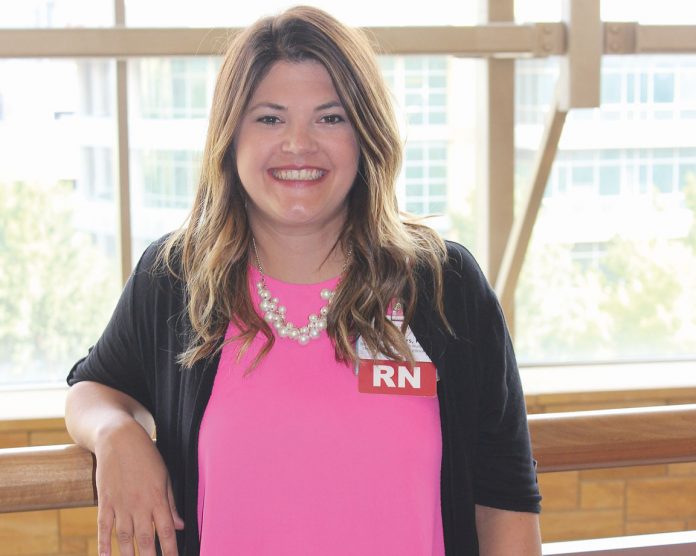
Extra light of hope – Phase 1 clinical trials provide hope at Stephenson Cancer Center
by James Coburn
Staff Writer
A lot of cancer patients have been told their options are exhausted. Stephenson Cancer Center provides and extra light of hope.
Stephenson Cancer Center ranks in the top three cancer centers for clinical trial enrollment in the nation. The National Cancer Institute sponsors trials. And Stephenson Cancer Center offers more clinical trials than anyone in the state. It also has the only phase 1 clinical trials in the state offering cutting edge therapies coming to the market.
Some of the patients come to Stephenson after having been told that they have run out of treatment options in Oklahoma.
These patients no longer have to go out of state to M.D. Anderson or the Mayo Clinic for treatment. They no longer have to travel and be away from their families.
It means that potentially in the last years of their lives, they can remain nearer to their homes. It provides peace of mind.
Phase 1 is typically for drugs that have not been FDA approved, said Dena Suthers, RN, senior oncology research nurse team lead. She has been with Stephenson for two years. They are clinical trials patients can be eligible for and enroll in for cancer treatment.
“Both sets of my grandparents have had a family history of cancer,” Suthers said of what prompted her trajectory of care. “And seeing some of our limited options were at times for treatment and how that can be on the patients — hearing this, and an opportunity to give patients more than just your standard therapy of treatments was a big thing for me.”
Family is important to Suthers. She has a 3 year old and a 10 year old who keep her busy. Her work is an investment in the future of humanity.
These are drugs that are very new and innovative with advanced therapies. They are usually for patients with advanced stages of reoccurring cancers who need to see what options exist.
Sometimes the treatments do not work or the patients are not eligible for the clinical trials. But it gives patients and their families peace of mind knowing they tried the next avenue of treatment, too.
“Our role is to see patient records, review them to see studies they may be eligible for,” she said. “And then we set them up with a consult of physicians about maybe what the drug is, maybe any side effects, the plan for treatment and any extras they have to get while they are in the study.”
She works in the background gathering information so the patient can be in the correct spot for a clinical treatment.
The research nurses will do extra safety checks and the require lab work with diagnostic tests pertaining to a cancer type. Suthers will then set the patients up for the screening to make sure they are eligible. Once the patients are enrolled they are moved to the infusion team that will complete the treatment.
“We have a strict protocol on inclusion and exclusion, items they have to fit in order to be enrolled to receive their trial drug,” she said. “If they are eligible for the study we put all of the information together to submit to the sponsor which would be the drug company.”
Suthers is the lead nurse over three other registered nurses and a licensed practical nurse. There are also eight RNs or LPNs rendering the infusion process. Nurse practitioners and physicians fill the team.
“We have 30 different studies currently,” Suthers said. “The numbers of patients fluctuate depending on when a patient gets on a study. It depends on whether the drug is working for them and they can stay on the study, and if the drug is maybe causing some side effects. So it fluctuates on how many patients.
“But on an average we enroll 15 new patients a month.”
To get a patient on a study will usually take 20 hours of review and consultation. There is also a lot of educating and the review of results in getting the packet together, she said.
Phase 1 nurses are specialized in their approach. Phase 1 studies are set in a separate clinic where patients can be monitored by Phase 1 infusion nurses that are trained to watch for subtle nuances that could affect an outcome.
It is reflective of the Oklahoma Spirit for nurses to know they are doing something vital that potentially can extend lives.
The department continues to grow and evolve. Suthers can see a difference even during the time she has been with Stephenson Cancer Center.
“It used to be that this is for people as a last option. Now we have studies that are for a very first treatment,” she said. “It could be a second line options, a third line option or an option for when they have run out of their standard of care online chemos that have been FDA approved.”
A specialized treatment of care for a myriad of cancer types is leading the future of cancer treatment. The specific makeup of each tumor results in the best options for treatment, Suthers said. All cancers are different and have subsets.
“It is outside the ordinary box of ‘This is how we have always treated lung cancer.’ So that’s been cool to see,” Suthers said. “Our job with the physicians is to see where do you fit in all the different categories.”
She will advocate across the nation for her patients. There are a certain number of slots available across the U.S. for phase 1 treatments. Cancer Centers are competitive. Suthers will see if she can trade slots, when appropriate, with other studies or request to over enroll.
“It’s fun figuring out the puzzle,” she said. “You become very close with them and their families.”











